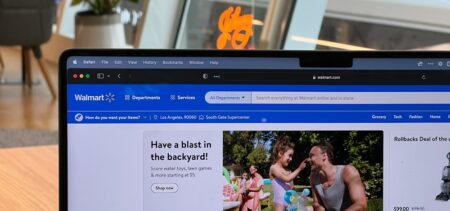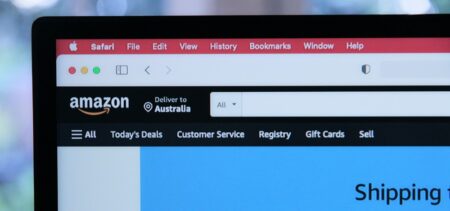Research on social buying
IDC issued in February 2014 a global research on social buying in B2B. Their study showed that senior B2B buyers include social networks in the purchase process, using professional networks (e.g. LinkedIn, which sponsored the research) in particular. Decision-validating use of social media characterized 75% of B2B buyers and 84% of C-level/vice president (VP) executives out of 760 respondents from 8 countries.
Almost a year later, in January 2014, a Leadspace infographic available on the Internet showed that social data influenced B2B buyers and sellers – almost repeating IDC’s numbers.
Proactive usage of social channels was recommended to sellers in order to increase understanding and to target possible business partners. Profiling the potential best customer can be achieved through studying its social activity and allows offering nurtured campaigns. This approach creates nurtured leads, which are 47% more likely to make larger acquisitions.
A recent debate prompted looking into these previous studies. Based on an even older Google research, this article talks about “B2B yelp-ification”. Taking into consideration the recent changes in technology and technology commerce, the marketers adapt their strategies to reach the new types of buyers whose numbers have made them representative for the base group.
How social buying works
Product reviews by verified users generate impressive reactions from buyers. Joining online product discussions works as an anticipative method could count for as much as two thirds of the entire buying process. Peer experience and qualified product reviews and ratings are important neutral sources when buyers consolidate their opinions.
Since the sellers benefit from independent reviewing, cultivating reviewers gains momentum. Engaging customers, participating in online discussions with them, managing negative reviews – all serve in providing the consolidated image that benefits a B2B business on social media channels.
The first step is assimilating the current social media importance in one’s market strategies. Next would be understanding the customers – ultimately peers, or business partners. Some have their particularities and also manifest their business persona in the online medium. Research may prove very helpful, the more structured the better.
In some instances, this meeting of potential business partners via the social media channels simply supposes reaching out for the desired buyers while the seller simply continues its usual social media activity. Especially when the seller already uses a social media strategy, a simple entry point could suffice. For some other instances, understanding the potential buyer online leads to the necessity of enriching or shifting the seller’s social media presence.
The IDC study, for example, shows that the buyers with greater influence, larger budgets and higher purchase frequency are more inclined to use social media in consolidating their decisions. Social media is therefore an important opportunity and opting out of it may lead to serious damages. Whilst confidence and trust are built by narrowing down the best practices in this relatively new area, the total lack of social media presence could be misinterpreted and might harm the business.
One of the key findings in this study lies in the importance of online professional networks when it comes to the final stage of the purchasing progress, followed by third-party expert recommendations.
Social Media Marketing
Once establishing that the B2B buyer can also be a “connected buyer”, ITSMA (Information Technology Services Marketing Association) designated this vertical B2B segment as the “Social B2B buyer” niche.
Approaching this new breed of B2B buyers calls for some guidelines, and field professionals are striving to prompt some of the success factors: integrated strategy, providing the right content at the right time, knowing the industry’s communities and sub-communities and – although it takes some getting used to this in picturing the B2B business – understanding that emotions do matter in B2B interactions.
You can see here a slideshow on the evolution of B2B buying. Basically it creates the image of a modern, more independent buyer who likes to research, gather sources, enhance its capacities of understanding and set up its terms. Social media enables all these, while the marketers must adapt in serving their clients’ interests:
• The marketing campaigns should be specifically tailored for buyers’ profiles;
• The role of display advertising increases and it also expands into telling a story;
• Identifying yourself as a company should clarify the unique value proposition that makes your business stand out;
• The same vision and clarity should underline the linear narrative used in product presentations;
• Validation from previous customers and from peers further strengthen and confirm the basic presentation;
• Personalization is very important and should be correctly understood and put into practice; if it doesn’t work, you are not doing it right (yet).
Social Proof Marketing
This marketing sub-category synthesizes the techniques and the goals of social media marketing applied to B2B.
As shown in this B2B buyers’ survey, the top three resources for 2015’s B2B buyers are the industry experts/analysts and their peers/colleagues, followed by web search.
Therefore social proof definitely plays an important role and businesses should market taking this into consideration.
Advocate marketing reiterates the idea of engaging the best customers and turning them into brand advocates, in order to increase social media buzz (yes, we are talking B2B), to generate accurate product reviews and authentic user-authored content and to provide valuable references.
Encouraging and motivating advocates can take various aspects, like inviting them to product-related conferences or offering small rewards that do not affect their independent status.
Useful:
A list of major B2B and SaaS review sites to be present alongside your own social media pages in order to establish good social proof rates.
Keep monitoring reviews, positive and negative. Positive reviews are worth highlighting on your landing page, while negative reviews should be approached and answered in a clear and professional manner. In the second case, it is both about the unsatisfied customer as it is about all the potential customers who may be following your response/reaction.
Social buying in B2B is not a myth anymore. It might not be universally visible, but it is only a matter of percent. Many have not adopted it yet, but would do so if they connected with their peers this way. As soon as a few influencers step in, or as soon as the important percent tips the scales, the entire professionals’ network will be reunited in this virtual space. And anticipating might be the key when it comes to getting ahead competition.




























